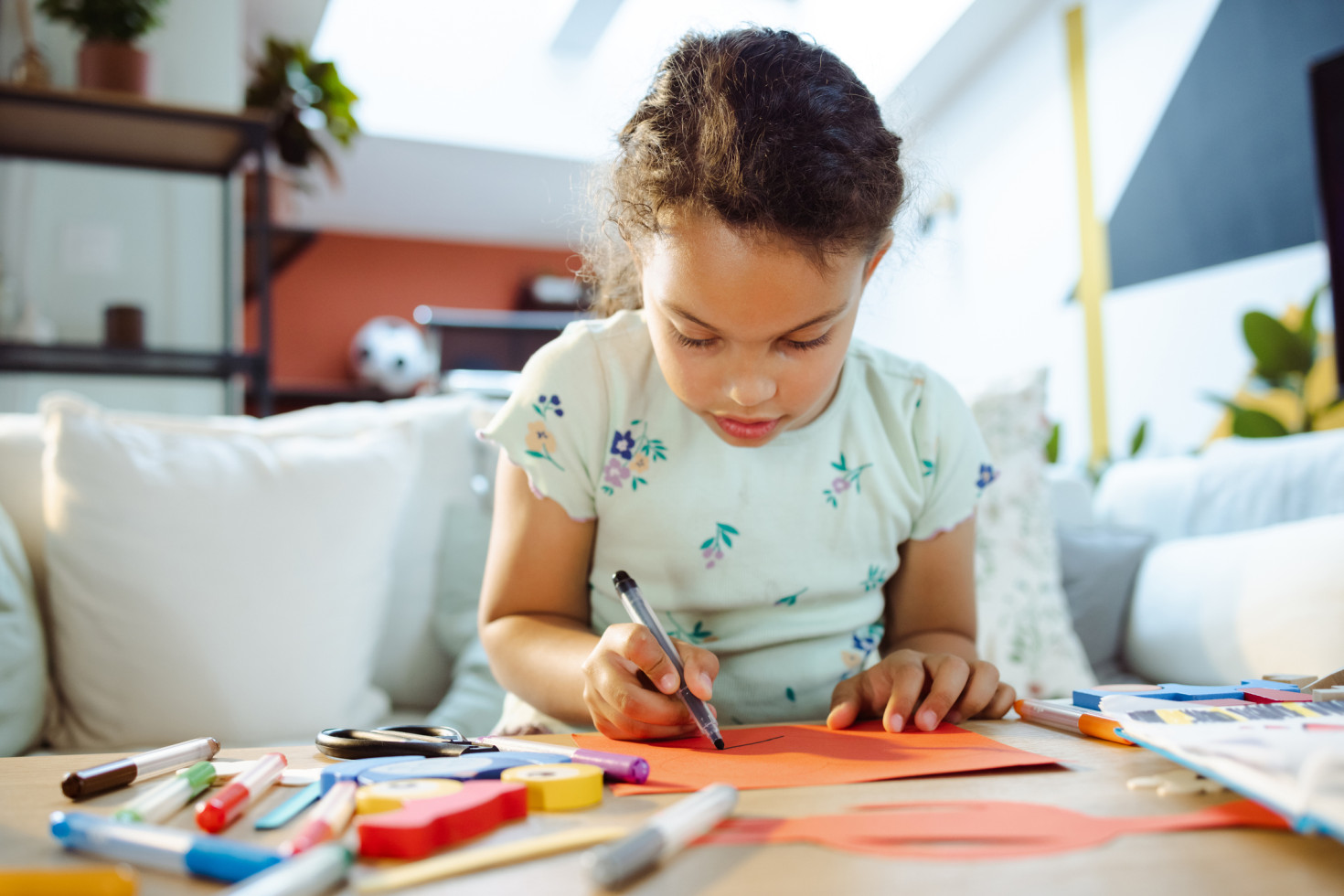Time Required
The time required for this practice will vary based on the art form you choose.
How to Do It
This practice introduces children to the concept of gratitude using simple steps that encourage them to recognize and celebrate the good in their lives in a fun, creative, and meaningful way.
Introduce the concept of gratitude: Explain to your children what gratitude means and why it's important. You can say something like this: Gratitude is a warm feeling you get when something nice happens or when you realize that there are things in your life or people in your life that make you feel happy or loved—and that you would not want to do without or be without. You might feel grateful for your family, friends, or even your pets. You might also feel grateful when someone does something kind for you. For example, if you were struggling with a tricky homework problem and your older sibling or parent took the time to explain it to you, that feeling of happiness and appreciation you have is called gratitude. Expressing gratitude not only helps us to feel happier, but also makes others feel happy when we express our thanks to them directly.
Get creative: Encourage your children to take a few minutes either once a day or once a week to make “Gratitude Art.” Provide your children with some ideas. For instance, you could suggest the following: Make a gratitude box or journal in which you collect cut-outs from a magazine, photos you took, your own drawings or paintings, or items that represent the people, things, or events that made you feel grateful.
Reflect and share: If you have the time and resources, organize a "Gratitude Party" where your children and their friends can create collages of the things for which they are grateful. Provide materials and space for them to work on their collages and then have them share their artwork with one another. If a party isn't feasible, simply spend some time with your children reflecting on their entries and discussing what they are grateful for. You could even share some of the things, people, or events that you are grateful for with them.
Why You Should Try It
Practicing gratitude can be difficult, particularly when so many things are constantly competing for our children’s attention, like school, social media, and extracurriculars.
Cultivating the practice of expressing gratitude from a young age can therefore be particularly beneficial. By developing this habit in our children, we can set them on track to live happier and more fulfilling lives. Children who practice gratitude more also tend to get better grades and have healthier habits. Moreover, by encouraging our children to practice gratitude, we might also be helping them to develop into more altruistic teens.
Why It Works
Gratitude is a character strength that can be developed through intentional practice. Many of the common gratitude practices focus on writing (e.g., keeping a gratitude journal, writing a letter, or creating a list of things you are grateful for), yet scholars have longed emphasized the value of art in learning and development. This practice allows children to use art to express their gratitude, which is particularly beneficial for children who are not yet easily able to express themselves with words or who simply find art to be more engaging or exciting.
Evidence That It Works
Hall, A. H., Bache-Wiig, G., & White, K. M. (2025). Exploring the impact of gratitude practice as a protective factor for young children. Early Childhood Education Journal, 53, 759–767. https://doi.org/10.1007/s10643-023-01623-3
For 16 predominantly white, first-grade students, a 28-week gratitude program increased their practice of gratitude and their emotional well-being. One component of the program focused on creating gratitude art, alongside other practices such as writing brief daily gratitude reflections and composing weekly thank-you notes, which they could choose to deliver.
Sources
Grace Bache-Wiig, M.A., Clemson University






Comments
and Reviews
The Greater Good Toolkit
Made in collaboration with Holstee, this tookit includes 30 science-based practices for a meaningful life.
The Greater Good Toolkit
Made in collaboration with Holstee, this tookit includes 30 science-based practices for a meaningful life.